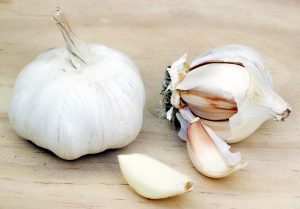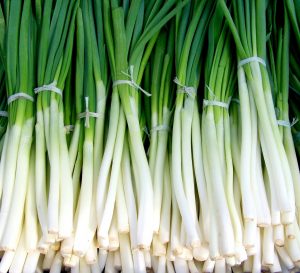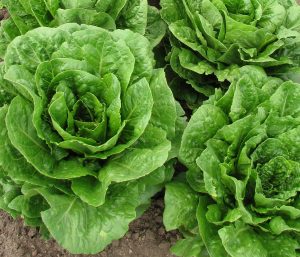
Whether you’re a novice gardener or an experienced vineyard owner, this guide will provide you with comprehensive information on how to successfully grow and maintain grapevines. Grapes are one of the oldest cultivated fruits in the world, and they can be grown in a variety of climates and soil types. In this article, we’ll cover everything from choosing the right grape variety to planting and caring for your vines, so read on to discover how you can get started with growing your own delicious grapes today!
The Importance of a Warm Soil for Growing Grape Vines
Grape vines thrive in warmer soil, which is why it’s important to choose the right location for planting them. The ideal location is a large, open, sunny space with good soil. Grapes need about 50 to 100 square feet per vine. Once planted, it’s crucial to water the vines regularly throughout the first year of growth to establish a healthy root system. As grape vines are temperature-driven, it’s important to remember that most of the heat of the day comes after midday. So, selecting a location with warm soil and good air circulation is essential for optimal growth. With proper pruning, feeding, and adequate soil moisture, the grape vines will produce bountiful fruit, adding to the enjoyment of a home garden or vineyard.
Initial Watering Requirements for Grape Vines
Once your grape vines have been planted, it’s important to pay close attention to their watering needs. During the first growing season, newly planted grape vines should be watered weekly if there is no rainfall. A good rule of thumb is to water them enough to wet the soil 6 to 10 inches deep. As the grape vines establish themselves, continue to water regularly throughout the summer, especially during dry spells, to help them settle in. Remember to water deeply and regularly, but avoid watering erratically as this could harm the grape vines. By providing consistent and appropriate watering, your grape vines will be well on their way to healthy growth and fruitful harvests.
Regular Watering for the First Year of Grape Vine Growth
Regular watering is crucial for the first year of grape vine growth. As mentioned earlier, watering should be done weekly in the absence of rainfall, and the soil should be wetted six to ten inches deep. This will ensure that the vines develop a strong root system, which is fundamental for continuous growth and optimal fruit production in the future. It’s essential to keep the soil slightly moist and avoid over-watering because this can harm the growth of your vines. Remember to also water your vines well during prolonged periods of dry weather, especially during the fruiting season. Taking care of your grape vines during the first year is critical to establishing a robust and healthy growth pattern.
Ideal Growing Conditions for Grape Vines
To achieve optimal growth for grape vines, it’s important to consider the ideal growing conditions. Grape vines thrive in well-drained, loamy soils with a pH range of 6.0 to 6.5. The vines need a good amount of sunlight to flourish, generally requiring at least six hours of direct sunlight per day. Additionally, grape vines require moderate temperatures, with a minimum temperature of 50F and a maximum temperature of 90F. It’s also important to avoid areas with high humidity, as this can lead to fungal diseases that can harm the plant. By planting grapes in the right location with plenty of sunlight and well-drained soil, grape growers can help ensure the health and growth of their vines.
Space Considerations for Grape Vine Growth
When it comes to growing grape vines, it’s important to consider the space required for optimal growth. Most contemporary table grape varieties should be planted with a distance of 3 meters between rows and 1.5 meters between plants within the row. However, the spacing can vary depending on the cultivar’s vigor. For example, the Concord grape, a vigorous cultivar, should be planted 8 feet apart, while less vigorous cultivars may be planted closer together. Space plants at least 8 feet (2 meters) apart within and between rows, and mulch around the plants to retain moisture. For those without a yard or limited space, grapevines can even be grown in containers. Additionally, when planting more than one vine, it’s important to space them at least 6-8 feet apart to allow for proper growth and development. By considering space requirements, gardeners can ensure their grapevines have enough room to grow and flourish.
Pruning Grape Vines for Optimal Growth
Pruning grape vines is essential for optimal growth and harvest. As mentioned earlier, grapevines need to be regularly pruned to maintain their shape and encourage new growth. The goal of pruning is to remove any dead or weak wood, promote airflow and sunlight penetration, and focus the plant’s energy on producing fruit. In the winter, it’s best to cut back any canes that bore fruit the previous year and trim one-year-old canes to around five to six buds. This encourages the plant to grow new shoots in the spring, allowing for maximum fruit production. But be careful not to over-prune, as this can lead to reduced yields. By following proper pruning techniques, grape growers can ensure their vines are healthy and fruitful for years to come.
Soil Quality for Grape Vine Growth
Soil quality is an important consideration when it comes to growing grape vines. As mentioned earlier, well-drained soils are necessary for optimal growth and yields. It is best to avoid soils that are persistently wet during the growing season. In addition, grape vines prefer a neutral pH of about 7, but can tolerate slightly acidic or alkaline soils. Adding organic matter, such as fertilizer, manure, or peat moss, can also improve soil quality for grape vine growth. It is important to assess soil drainage before planting, as grapes require good drainage. Choosing the right soil and ensuring proper drainage can set up grape vines for success in the long run.
North-Facing Locations for Grape Vine Growth
When it comes to growing grapes, one important consideration is the direction in which they face. Oregon State advises that planting grape vines in rows that face north and south allows better access to the sun than planting them with an east-west orientation. This is because these sun-loving plants require plenty of sunshine to produce high-quality fruit. As such, grapevines require a sunny, well-draining position for optimal growth. It is also important to avoid planting them in the shade of trees or against a north-facing wall. Thankfully, you don’t need a vast field to grow your own grapevines – even a small garden can provide enough space. Just ensure that you choose a north-facing location if you live in an area with an early spring frost, as this will help to protect your grapes from potential damage. By taking these factors into account, you can set your grape vines up for success and look forward to a bountiful harvest.
Proper Planting Techniques for Grape Vines
Proper planting techniques are essential for the growth and development of grape vines. It is crucial to prepare a large, open, and sunny space with good soil before planting. One should remove all canes except the most vigorous one at the time of planting. The depth at which grape vines are planted is also crucial. The vine should be planted at the same depth as it was in the pot. If planting against a wall or fence, it is best to position the vine at least 20 cm away from the structure. It is equally important to choose the right grape variety depending on the feasibility of planting grapes on a specific site. Hybrid grape vines are less demanding than conventional vines, which require proper viticultural techniques. Moreover, good air circulation should be maintained to control disease. By following these proper planting techniques, one can ensure the optimal growth and health of grape vines.
Timeline for Establishing Grape Vine Growth
When it comes to establishing grape vine growth, timing is everything. From soaking the roots and pruning to choosing the right planting season, there are many key factors to consider. It’s important to plant vigorous one-year-old bare-root plants in early spring, around May 1st, but it’s equally important to ensure the ground isn’t frozen when planting. Once planted, it’s critical to keep the young grapevines well-watered for the first year of growth. Come winter, the vines must be heavily pruned, back to the main framework of branches, to encourage optimal growth. By following this timeline for establishing grape vine growth, gardeners can ensure a healthy and successful harvest for years to come.






